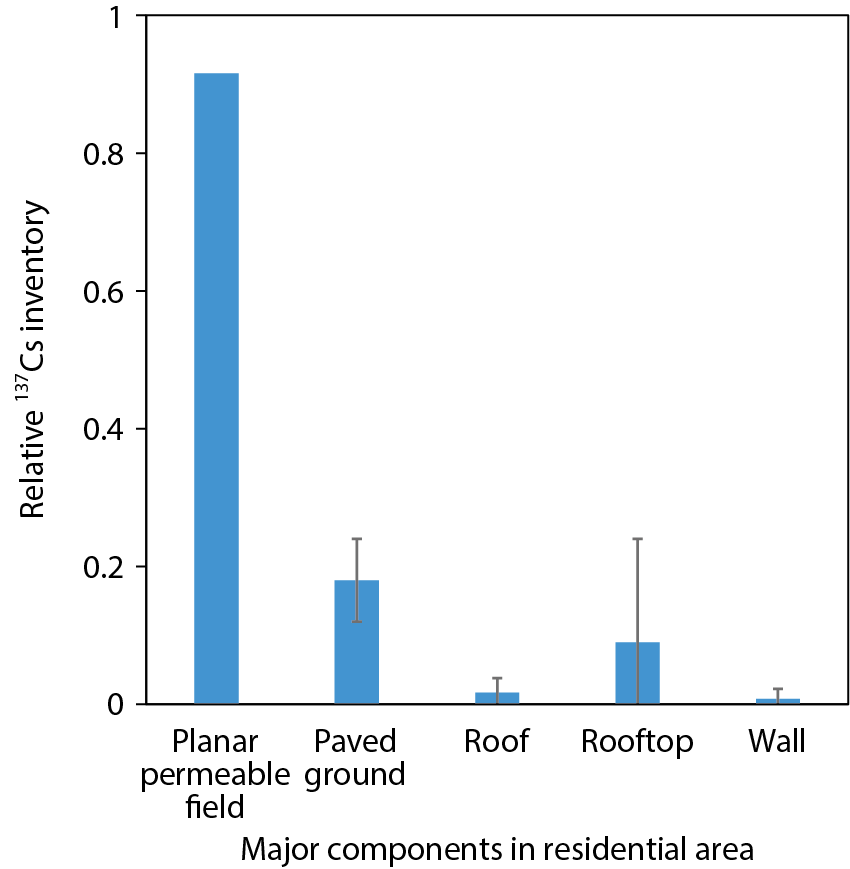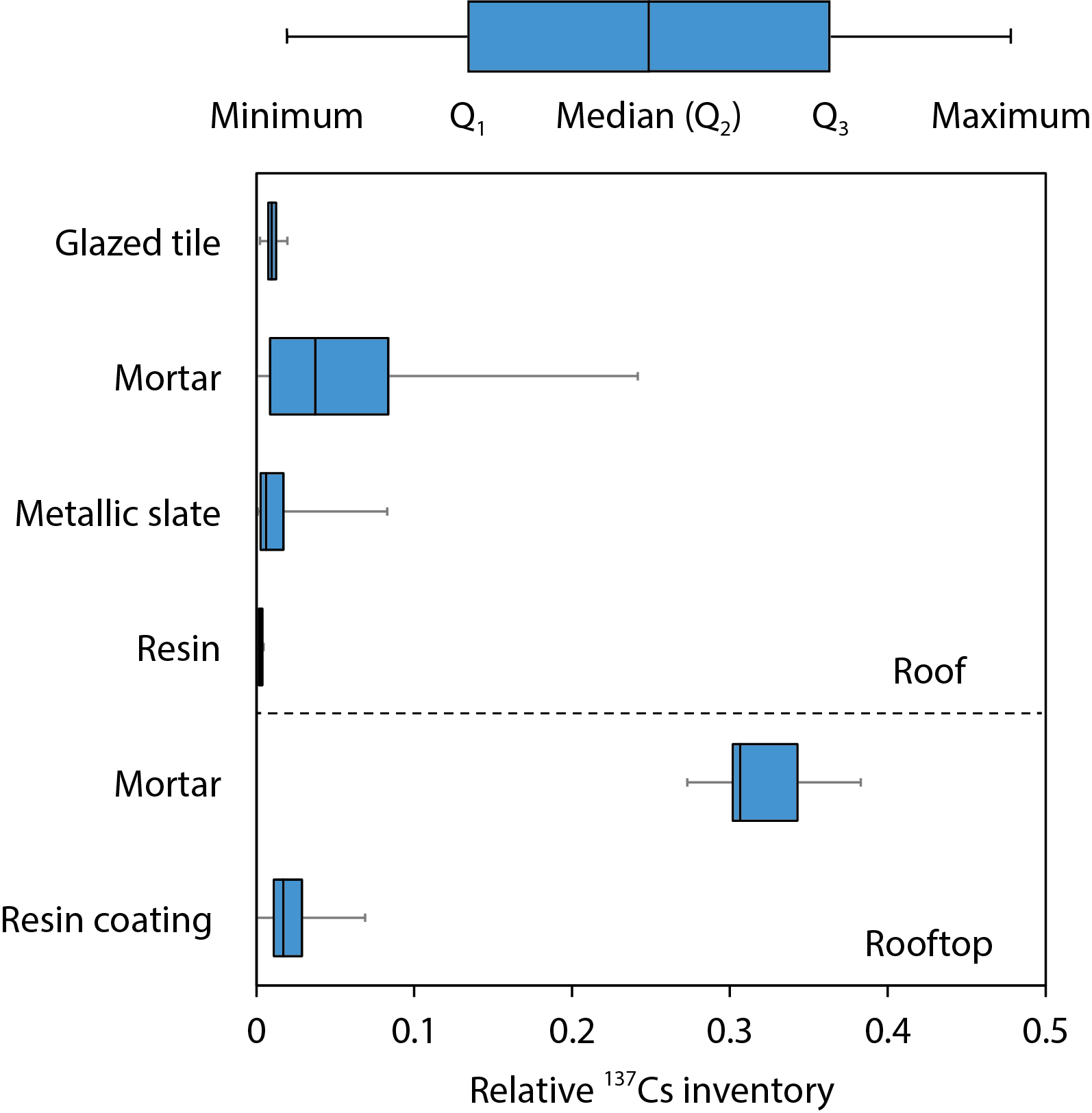
Fig.1-28 Relative 137Cs inventory on studied components in urban areas during January 13–23, 2015

Fig.1-29 Box-and-whisker plot of the relative 137Cs inventory for surface materials of roofs and rooftops
The distribution and migration of radiocesium in diverse terrestrial environments has been well-studied; however, there has been little analysis of its behavior in residential areas. Since residential areas comprise diverse components such as paved ground, roofs, walls, and permeable ground, the radiocesium dynamics should be different from other terrestrial environments. To evaluate the dynamics of radiocesium in a residential area, 137Cs inventories (activity per unit area) were measured on major components (i.e., roofs, rooftops, walls, planar permeable fields, and paved ground) for 11 building lots in the evacuation zone in January 2015. The 137Cs inventories were converted to relative 137Cs inventories, which are defined as the relative values of the 137Cs inventory on each component to the initial 137Cs inventory on a nearby planar permeable field, enabling comparison of 137Cs inventories among sites with different initial deposition amounts. The initial 137Cs inventory on planar permeable fields on March 23, 2011 was estimated by only physical-decay correction, since the 137Cs inventory on planar permeable fields has been reported to decrease almost as predicted by its physical-decay constant, without any detectable wash-off effects.
The average relative 137Cs inventories on the components are shown in Fig.1-28. The value on paved ground accounted for about 20 % of that on the planar permeable field. Other components, such as roofs, rooftops, and walls also showed values less than 10 % of that on the planar permeable field. This study was carried out in the evacuation zone in which decontamination had not been conducted. Therefore, these results indicate that large amounts of radiocesium deposited in the residential area were removed by initial run-off and the following wash-off effects due to rainfall over the four years following the accident, even without decontamination.
The average relative 137Cs inventories on roofs and rooftops showed large coefficients of variation over 100 %. Studies in Europe reported that porous materials such as unglazed tiles have larger absorption capacities for 137Cs than other materials. Variations in the relative 137Cs inventories depending on roof and rooftop materials were also observed in this study (Fig.1-29); smooth-surface materials such as glazed tile, metallic slate, and resin showed low relative 137Cs inventories, while unglazed mortar showed large values. Since the roof and rooftop are major components in residential areas, these results indicate that the migration of radiocesium deposited in the area largely depended upon the materials of roofs and rooftops.
The results in this study are expected to contribute to decontamination planning and exposure-dose simulations in residential areas.